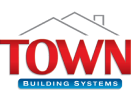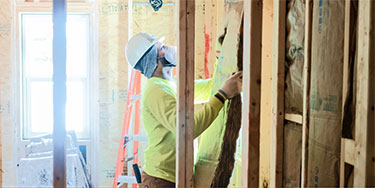Does My Home Need Reinsulating?
Home insulation deteriorates over time. There comes a point when you need to consider replacing your insulation.
If you’ve noticed that your indoor home temperatures have been irregular or constantly changing or your energy bills have increased, these are some of the first signs that your home insulation needs replacing.
Warning Signs That Your Insulation Needs Replacing
How would you know if your insulation isn’t doing its job? Here are some warning signs that you need an insulation replacement:
- High energy bills: High energy bills could indicate that your HVAC system is working harder than normal to regulate the temperature in your home. Poor attic or crawl space insulation can cause outdoor weather temperatures to penetrate your home. If your energy bills are higher than usual, you should investigate the condition of your insulation.
- Drafts: Drafts in your home could suggest a problem with your wall, attic, basement or crawl space insulation. Cold drafts can seep into your home when there’s not enough blockage between the outside air and the inside air. If you notice these drafts, even after you’ve closed all doors and windows, it’s a good time to check out your crawl space or attic.
- Household pests and/or animal infestation: Have you seen or heard rodents, insects or any kind of wild animal roaming around in your attic? Sometimes these rodents and insects can feed off or even nest in old insulation. These pests can also eat, tear apart and destroy insulation. A poorly air-sealed home is easier for these pests to break into, creating even bigger holes in certain types of insulation.
- Water damage: If you’re beginning to see those embarrassing brown or dark-colored splotches on your ceiling, these are common signs of a leak. Where there is a leak, there could also be mold, which can create a health hazard for your family. If mold has made its way into your insulation, it can affect your indoor air quality and damage your health in the long run.
How to Determine How Much Insulation You Have
Now that we’ve uncovered the primary warning signs that determine if you need home insulation replacement, let’s look at how you can tell how much insulation you have in your home.
Regardless of where you live or the type of climate you dwell in, having sufficient and properly installed insulation is vital to keeping your home comfortable. It’s pretty hard to have too much insulation; in fact, older homes often don’t have enough.
Understanding R-Value
To determine how much insulation you have in your home, you need to know the R-value of the insulation type and thickness of your home’s insulation. An R-value is a measure of a building material’s capacity to resist heat flow. The R-value of an insulating material depends on its thickness and thermal conductivity ― a higher R-value means that the material provides better insulation than one with a lower value. Simply put, the higher the R-value in your home, the easier it is to heat and cool and the less energy is needed to keep it comfortable.
Where to Install Insulation
Your home should be properly insulated from the roof down to its foundation to achieve optimal energy efficiency. Areas to install insulation in your home include walls, attics, crawl spaces, basements and floors.
How Much Insulation Should You Have?
To figure out how much insulation your home currently has, find the R-value of your current insulation type and multiply that by how many inches of insulation you have. For example, if you have 12 inches of blown-in cellulose insulation (R-value 3.2 to 3.8) in your attic, the space’s overall R-value is between 38.4 and 45.6. Another dependable source that can help you determine your current R-value: the insulation professionals at Town Building Systems.
Next, determine the R-value recommended for your home. This will depend on what region you live in, your climate, the type of heating and cooling system in your home and where you want insulation in your home. The Department of Energy has created a climate zone map that U.S. residents can refer to determine the recommended R-value for their homes. Buffalo is in Zone 5.
Common Types of Building Insulation
Building insulation comes in several different types and materials, each of which has its own benefits. The types of insulation that Town Building Systems offers include:
- Fiberglass insulation
- Spray foam insulation
- Cellulose insulation
- Rigid board insulation
- Rockwool insulation
Most insulation projects require professional installation due to specialty materials or technical application methods.
Should I Remove My Old Insulation?
If you’re wondering if you need to remove your old insulation before new insulation is installed, in most cases, you don’t need to. However, there are some instances when your old insulation should be removed. In general, insulation should be removed when it is:
- Wet or damp
- Moldy
- Damaged by fire or anything else
Replacement Insulation Services by Town Building Systems
Whatever type of installation you need, Town Building Systems can help you achieve the desired, energy-efficient comfort you are seeking in your home. As part of the IBP Family of Companies, we offer the resources and expertise that few local companies can match.
Contact us at 716-525-8910 to learn more about our insulation installation services!



